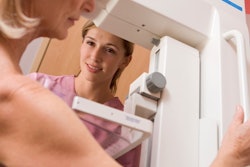
While approximately one in four hospital radiology departments has either just adopted machine learning or has been using artificial intelligence (AI) for a while, most hospitals and imaging centers plan to utilize the technology before 2020, according to a new report from market research firm Reaction Data.
What's more, those who will soon deploy machine learning are looking beyond just the current dominant use case of breast imaging, according to the recent survey. Nearly two-thirds of respondents who plan to use machine learning in the future are targeting lung studies and chest x-rays.
Reaction Data conducted its survey in late December 2017. Of the 133 respondents, 45% were directors of radiology departments, 20% were radiologists, 9% were imaging directors, 7% were radiology managers, 7% were chiefs of radiology, 6% were technologists, and 6% were PACS administrators, according to Reaction Data. In addition, 90% were from hospitals and 10% were from imaging centers.
Imaging centers lag
Research Data said there has been very little adoption of AI by imaging centers; all of the adopters in the survey were from hospitals.
| Plans to use machine learning in medical imaging | ||
| Imaging centers | Hospitals | |
| We just adopted machine learning | 0% | 8% |
| We've been using machine learning for a while | 0% | 15% |
| We plan to adopt machine learning in the next 12 months | 8% | 12% |
| We're 1-2 years away from adopting machine learning | 33% | 26% |
| We're 3+ years away from adopting machine learning | 33% | 24% |
| I don't think we'll ever use machine learning | 25% | 16% |
"This is something we did not expect, as oftentimes imaging centers are less risk-averse than their hospital counterparts," Reaction Data wrote in their report.
New use cases
Among those survey respondents who were currently using machine learning in medical imaging, breast imaging was far and away the most prominent application:
- Breast (75%)
- Lung (25%)
- Cardiovascular (19%)
- Chest x-ray (19%)
- Liver (19%)
- Pulmonary hypertension (13%)
- Bone (13%)
- Other (13%)
- Neural aneurysm (6%)
For those planning to use machine learning in the future, however, lung imaging and chest x-rays topped the list:
- Lung (68%)
- Chest x-ray (63%)
- Breast (62%)
- Bone (41%)
- Cardiovascular (38%)
- Liver (35%)
- Neural aneurysm (29%)
- Pulmonary hypertension (16%)
- Other (16%)
In other findings, practicing radiologists tended to be more skeptical of machine learning's applicability and usability, while department leaders held a more optimistic opinion of the technology, Reaction Data noted.



















